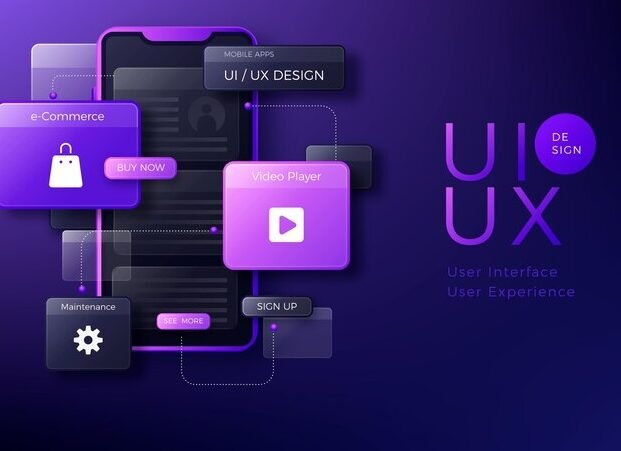What’s New in Figma
Figma continues to be a leading choice for designers due to its collaborative features and continuous updates. In this article, we’ll dive into the latest features introduced in Figma, exploring how they enhance the design experience and provide new opportunities for creativity. We’ll cover each update in detail, and wrap up with a comprehensive FAQ section to address common questions about these new features.
Figma has established itself as a powerful design tool favored for its real-time collaboration and cloud-based versatility. As the platform evolves, it frequently rolls out new features to address the needs of modern designers. In this review, we’ll explore the most recent updates in Figma, focusing on how these enhancements can impact your design workflow and collaboration efforts.
New Features in Figma
1. Advanced Auto Layout Enhancements:
Figma’s Auto Layout has received a significant upgrade, providing more flexibility and control over design elements. The latest improvements include:
Spacing and Padding Control: Designers can now fine-tune the spacing between items and padding within frames more precisely.
Stacking and Alignment Options: Enhanced stacking options allow for more complex layouts, and new alignment controls ensure elements are positioned exactly as needed.
Responsive Design Features: Auto Layout now better supports responsive design, making it easier to create adaptive layouts that adjust seamlessly across different screen sizes.
2. Component Variants and Overrides:
Managing design components has become more streamlined with the introduction of component variants. Key features include:
Variant Support: Create multiple variations of a component (e.g., different states of a button) within a single component set.
Simplified Overrides: Easily adjust specific properties of variants without breaking the overall component structure.
Enhanced Organization: Group and organize variants to simplify component management and reduce redundancy.
3. Improved Prototyping Tools:
Figma’s prototyping capabilities have been expanded to offer more interactive and realistic design previews:
Micro-Interactions: Add micro-interactions and animations to your prototypes, providing a more accurate representation of how users will experience your design.
Conditional Navigation: Define conditional navigation rules to create more dynamic and responsive prototypes.
Prototype Performance Enhancements: Experience faster and more fluid prototype interactions with the latest performance improvements.
4. Collaboration and Feedback Features:
Collaboration remains a core strength of Figma, and the latest updates make it even easier to work with teams:
Comment Moderation: Manage and moderate comments more effectively, with options to resolve or delete feedback as needed.
Improved Version History: Access and revert to previous versions of your designs with a more intuitive version history interface.
Team Libraries Enhancements: Share and synchronize design assets across teams more efficiently with upgraded library management tools.
5. Accessibility Improvements:
Figma has made strides in improving accessibility, ensuring that the platform is usable by everyone:
Keyboard Navigation: Enhanced keyboard navigation support for users relying on assistive technologies.
Color Contrast Tools: Integrated tools to check and improve color contrast to ensure designs meet accessibility standards.
Screen Reader Compatibility: Better compatibility with screen readers to assist users with visual impairments.
What Is Figma Used For?
1. User Interface (UI) Design:
Figma is widely recognized for its capabilities in user interface design. It provides designers with powerful tools to create visually appealing and functional interfaces for websites, applications, and software. Key features include:
Vector Editing: Create scalable and precise UI elements with vector-based design tools.
Components: Build reusable design elements to maintain consistency across screens and projects.
Design Systems: Develop and manage design systems with global styles and shared components to ensure uniformity.

2. User Experience (UX) Design:
Beyond UI design, Figma excels in user experience design, which focuses on optimizing the overall experience of users interacting with a product. Figma’s UX design tools include:
Wireframing: Sketch out low-fidelity wireframes to plan the layout and structure of interfaces.
Prototyping: Create interactive prototypes to visualize user flows and interactions, testing usability and functionality.
Feedback and Iteration: Utilize real-time collaboration and commenting features to gather feedback and make iterative improvements.
Also read: How do you Measure Email Marketing ROI effectively
3. Collaboration and Team Work:
One of Figma’s standout features is its emphasis on collaboration. It allows teams to work together seamlessly on design projects, regardless of their physical location. Benefits include:
Real-Time Collaboration: Multiple users can work on the same file simultaneously, seeing changes and updates in real time.
Commenting and Feedback: Team members can leave comments directly on the design, facilitating clear communication and actionable feedback.
Version Control: Track changes and maintain a history of design iterations, making it easier to manage updates and revisions.
4. Design Prototyping:
Figma’s prototyping capabilities enable designers to create interactive and animated prototypes that simulate the user experience. This helps in:
User Testing: Test and validate design concepts with stakeholders and users before development begins.
Presentation: Showcase design ideas and user flows in a visually engaging manner to clients or team members.
Interaction Design: Define and visualize complex interactions and transitions between different screens or states.
Advantages:
1. Increased Productivity:
2. Improved Collaboration
3. Greater Flexibility
4. Consistency and Scalability
5. Enhanced Performance
Disadvantages:
1. Learning Curve
2. Feature Overload
3. Subscription Costs
4. Compatibility Issues
5. Over-Reliance on New Features
FAQ:
Q: What is Figma and why is it popular among designers?
A: Figma is a cloud-based design tool used for creating user interfaces, prototypes, and collaborative design projects. Its real-time collaboration features, cross-platform accessibility, and extensive design capabilities make it popular among designers and teams.
Q: How do the new Auto Layout features benefit my design process?
A: The new Auto Layout features offer greater precision in managing spacing, alignment, and responsiveness. This helps in creating flexible and adaptive layouts that can easily adjust to different screen sizes and design needs.
Q: What are component variants and how do they improve design efficiency?
A: Component variants allow you to create and manage different versions of a component within a single set, streamlining the design process and making it easier to apply consistent changes across multiple components.
Q: How can the new prototyping tools enhance user experience testing?
A: The updated prototyping tools enable you to create more interactive and dynamic prototypes with micro-interactions and conditional navigation, providing a more realistic preview of user interactions and improving user experience testing.
Q: What accessibility improvements have been made in the latest Figma updates?
A: Figma has improved keyboard navigation, added color contrast tools, and enhanced screen reader compatibility, making the platform more accessible to users with various needs and ensuring designs meet accessibility standards.
Conclusion:
Figma’s latest features represent a significant step forward in design technology, offering new tools and improvements that cater to the evolving needs of designers. From enhanced Auto Layout options to interactive components and improved performance, these updates are set to streamline workflows and elevate the design experience. By leveraging these new capabilities, designers can create more dynamic, responsive, and efficient designs. Stay tuned for future updates and continue to explore how Figma can support your creative journey.








